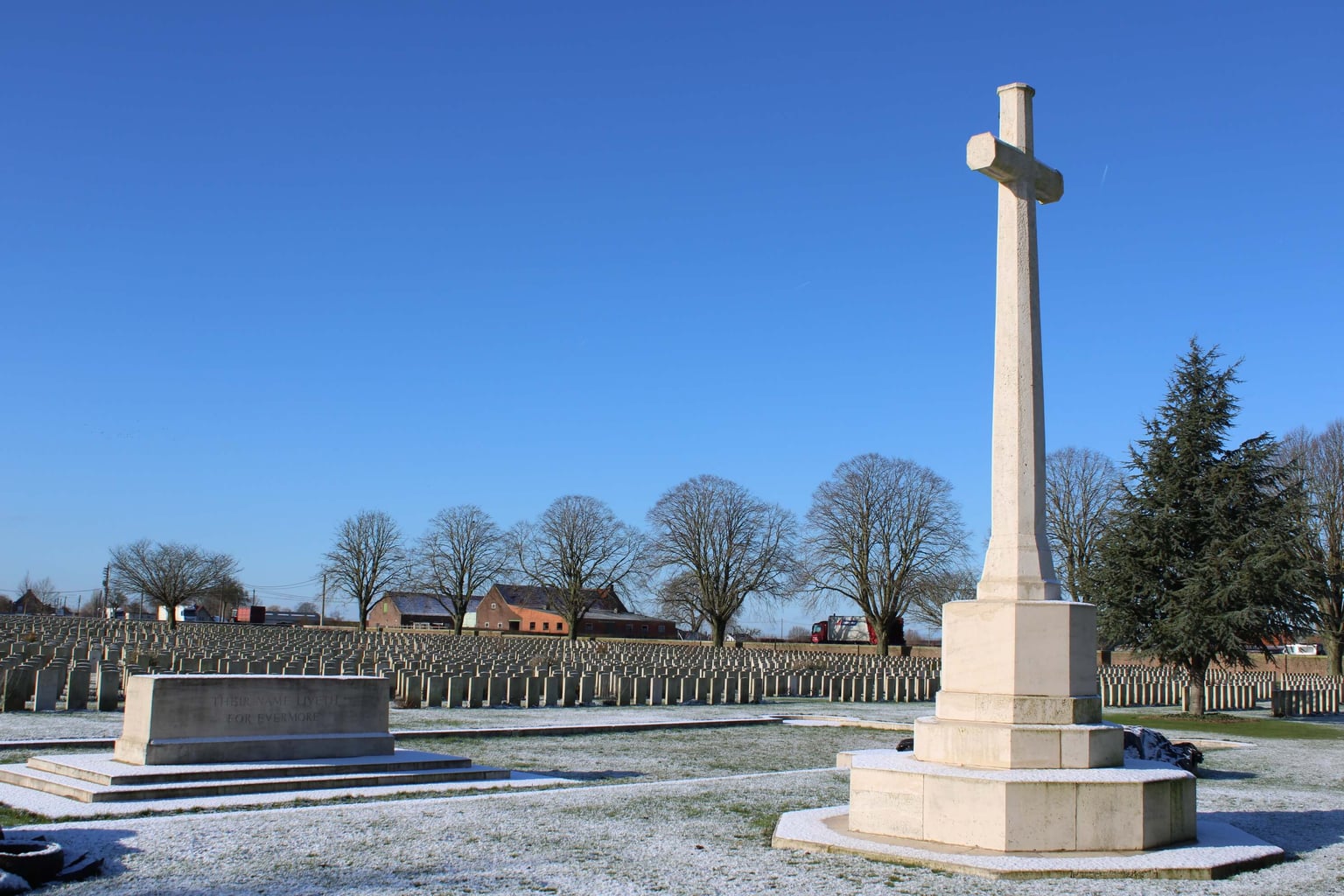Over the years, I have read several wonderful history books about Canadians in both wars, as well as books about the wars in general. For the latter, for example, I recommend these Smithsonian’s books: “World War I: The Definitive Visual History from Sarajevo to Versailles” and “World War 2: The Definitive Visual History from Blitzkrieg to the Atom Bomb”.
World War One
For the purposes of finding WW1 Canadian cemeteries and also Canadians buried in Commonwealth cemeteries, I tried to read up about the major battles that our soldiers led or were involved in because, sadly, that’s where the bodies are. I have read and re-read Ted Barris’ “Victory at Vimy, Canada Comes of Age: April 9-12, 1917” and would recommend it for a thorough and well-paced account of this battle and events leading up to it. Mr. Barris has many other publications about both wars and is a contributor to the Juno Beach and Beyond podcast.
I highly recommend buying a copy of the Commonwealth War Graves Commission’s map book, “Cemeteries & Memorials in Belgium & Northern France” if you plan to plot your own route to sites that I have not included on this website. At the museums in Europe, you will find lots of publications. For example, at Ypres, I bought “The Canadian Soldier, 1914-1918” by Lawrence Brown, “World War I” by Yann Thomas, and “1914-1918 The Great War” by Piet de Gryse and Christine Van Everbroeck (ed.).
World War Two
For locating sites of significance for Canadians involved in World War Two, I mostly read anything I could find that described the landing and the routes taken inland by the various Canadian regiments. A great book I bought at Juno Beach Centre years ago is “Atlas du Débarquement” by Yann Magdelaine, which has excellent maps showing the movement of the troops week-by-week from the landing through to September 1944.
I happened upon Terry Copp’s “A Canadian’s Guide to the Battlefields of Normandy” (LCMSDS, 1994) in a bookstore, in Vancouver, right when I was starting to plan out the website – serendipity! – finding this book felt like a sign that I was on the right track in my mission. This guide was helpful for learning about more remote sites that I had not found on my previous trips to this region.
It’s good to know the names of the regiments (for example, the Regina Rifle Regiment, the Stormont Dundas Glengarry Highlanders, etc.) as there are memorials dedicated to each of them. For example, the Queen’s Own Rifles of Canada came ashore at Bernières-sur-Mer and the first house they reached – now called Canada House – has a large plaque recognizing the bravery of this regiment in reaching the shore and liberating the town. At cemeteries, the headstones name the regiment, as well as the name of the soldier (if known) and age. Mr. Copp’s book (above) has a detailed list of the Regiments in each Brigade and Division, which is helpful for non-military people, like myself!
I am a big fan of maps, so I like “The Historical Atlas of World War 2 by Alexander Swanston and Malcolm Swanston.

